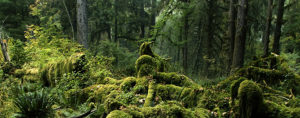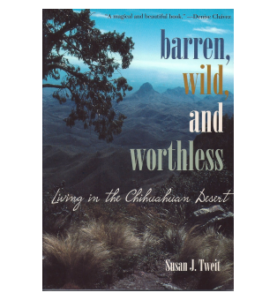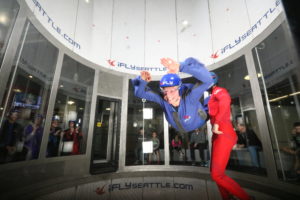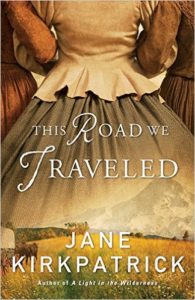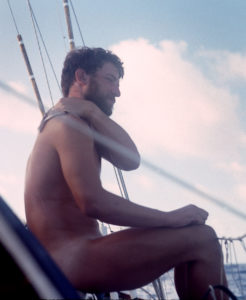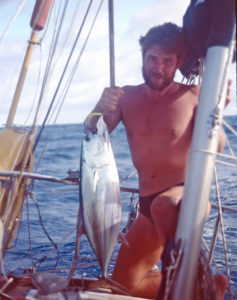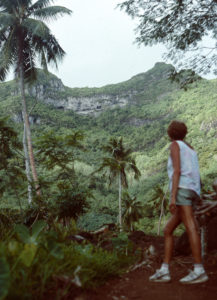
A ways to go: hiking Mount Otemanu in Bora Bora
Note: The following is taken in part from my memoir, Sailing with Impunity: Adventure in the South Pacific.
Bora Bora was one of the highlights of our South Pacific cruise aboard Impunity, our Bristol-40. Bora Bora is as beautiful as postcards describe. The ocean couldn’t be bluer, the hills lush and green. Besides the main island of Bora Bora, there are several small uninhabited islands within the reef.
After we cleared customs, we headed out to the secluded little island of Toopua and Bruce dropped anchor in 35 feet of water. The clear turquoise water allowed us to easily see the bottom. We rowed ashore in our dingy to a white sandy beach lined with coconut palms. Although no one lived on the island, there was a small copra harvesting operation. Coconuts were collected, split open, the meat pried out and placed on a raised platform shaded by a tarp. Later, it would be bagged and shipped off to be squeezed into coconut oil, mostly for cooking and cosmetics.
In addition to coconut palms, there were orange trees and what we learned were vanilla plants.
Although we loved “our” little island of Toopua, there were no roads and it was quite heavily forested. Occasionally, we would sail back to Vaitape, on the Island of Bora Bora to shop. We longed to get out and really walk, but found the hiking in Viatape frustrating. The village had streets, but they seemed to service only commercial buildings or private housing. We couldn’t find a way out of town without going through people’s private yards.
When we first arrived in French Polynesia at the Marquesas Islands, we were required to post bonds totaling $1,700. We would soon leave Bora Bora, and since that was our last French Polynesian landfall, we would redeem our bonds. While having our bonds refunded with the bank official, we asked how we could hike without going through private property. That next weekend, he and a group of kids and a few teachers were going to hike Mount Otemanu and he invited us to join them. “Tell your friends,” the banker said. “All are welcome. Bring your lunch and lots of water to drink.”
We spread the word among the yachties and several joined us. Our instructions were to meet him in front of the bank at eight the next morning, a Saturday. When we arrived, about thirty 12- to 14-year old kids, all with palm tree saplings in backpacks, four teachers carrying shovels, and our banker had gathered. As we headed out, we crossed in back of what looked like private property. We were impressed that many of the hikers, including the banker, were barefoot.
Almost immediately, the hike went nearly straight up. We followed a path, but much of the time we used vines and small trees to pull ourselves up. At times, our French banker positioned himself at strategic places to help people over particularly rough spots. I admired the stamina of those kids carrying trees.
As the trail wound up the mountain, it often gave us a view of the harbor. Our 40-foot boat appeared to be a dot in the water from this vantage. The different depths of water as it covered coral reefs dazzled us in shades of blues and greens.
When we stopped to rest, we perched on the steep hill. I didn’t find it restful hanging on to something so I didn’t slide back down the mountain, or pitch off its steep sides.
The hike up took about three grueling hours. Near the 2,379-foot top, the kids and teachers planted the coconut palm trees. The theory was that a palm tree planted at the top of the mountain would shed coconuts that would roll down the hill to start new trees. Their purpose was to avoid erosion and to replace trees that had died.
We ate our lunches and then the group more or less disbursed. The teachers and banker took the kids back down and we left as we felt like it. I found the trip down far more daunting than going up. To look down those steep hills and descend into a void was far more challenging than clawing my way up.
Hiking Mount Otemanu with these local people, though a tough challenge, was a memorable, broadening experience. And I could feel it in my muscles in the sailing days to come!



